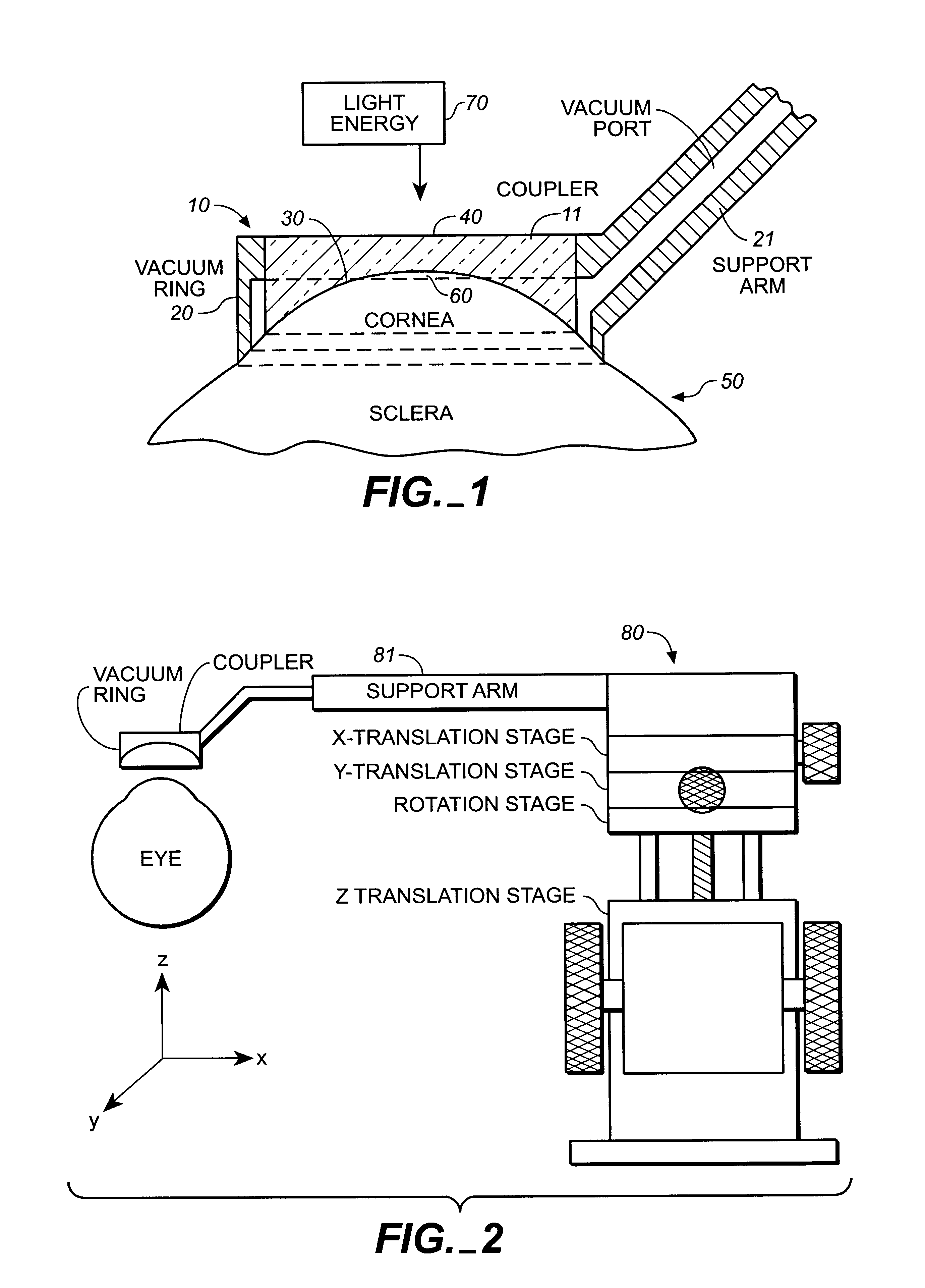Apparatus for cornea reshaping
a technology of a cornea and an apparatus, applied in the field of coupling apparatus, can solve the problems of eyeglasses and contact lenses being inconvenient to wear, eyeglasses and contact lenses being difficult to wear or impediments in daily activities, and reducing the ability of the eye to refract light, so as to prevent accidental exposure of the central optic zone
- Summary
- Abstract
- Description
- Claims
- Application Information
AI Technical Summary
Benefits of technology
Problems solved by technology
Method used
Image
Examples
Embodiment Construction
Referring now specifically to FIG. 1, the coupler device is shown in schematic cross section. The primary components of the coupling device 10 are transparent body 11, suction ring 20, corneal engaging surface 30 and masking means 40. The cornea itself is identified by the number 50 and the central optic portion of the cornea by the number 60.
It is an important aspect of this invention that the central optic portion 60 of the cornea 50 is not impacted by the light energy 70 which is emitted from an appropriate energy source, i.e. a hydrogen fluoride or thulium doped laser. By avoiding damage to the central optic zone the possibility of long-term, irreversible damage to vision is avoided. The avoidance or minimizing of risk in the treatment process used in conjunction with the coupler of this invention is an important technical and commercial feature.
The corneal engaging surface 30 of the coupler 10 acts to interface between the coupler device 10 and the cornea 50. The coupler device...
PUM
 Login to View More
Login to View More Abstract
Description
Claims
Application Information
 Login to View More
Login to View More - R&D
- Intellectual Property
- Life Sciences
- Materials
- Tech Scout
- Unparalleled Data Quality
- Higher Quality Content
- 60% Fewer Hallucinations
Browse by: Latest US Patents, China's latest patents, Technical Efficacy Thesaurus, Application Domain, Technology Topic, Popular Technical Reports.
© 2025 PatSnap. All rights reserved.Legal|Privacy policy|Modern Slavery Act Transparency Statement|Sitemap|About US| Contact US: help@patsnap.com



